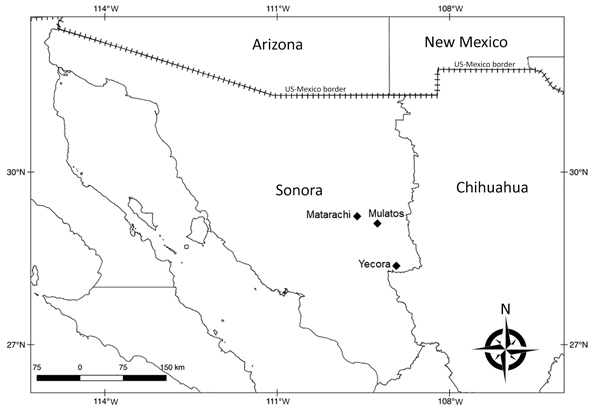Volume 25, Number 4—April 2019
Research Letter
Rickettsia parkeri and Candidatus Rickettsia andeanae in Tick of the Amblyomma maculatum Group, Mexico
Figure

Figure. Locations where ticks of the Amblyomma maculatum group were collected (diamonds) in a study of Rickettsia parkeri and Candidatus Rickettsia andeanae, Sonora, Mexico. A layer of Google Maps was used to construct the figure.
1These authors contributed equally to this article.
Page created: March 18, 2019
Page updated: March 18, 2019
Page reviewed: March 18, 2019
The conclusions, findings, and opinions expressed by authors contributing to this journal do not necessarily reflect the official position of the U.S. Department of Health and Human Services, the Public Health Service, the Centers for Disease Control and Prevention, or the authors' affiliated institutions. Use of trade names is for identification only and does not imply endorsement by any of the groups named above.